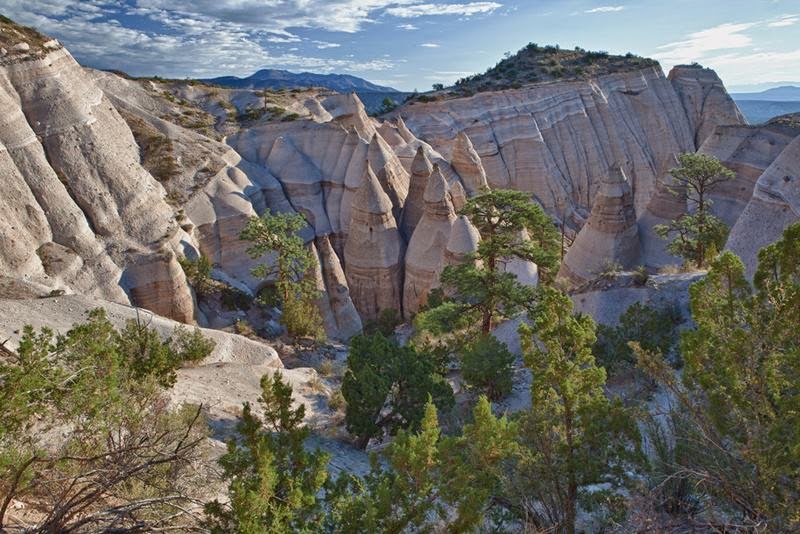Kasha-Katuwe Tent Rocks National Monument, New Mexico
The Kasha-Katuwe
or else they are called "Rock-Tents" or "Tent rocks" located 60 km
southwest of Santa Fe, a city in the state of New Mexico near near
Cochiti, USA, is a Bureau of Land Management (BLM)
managed site, on the height of 1737-1951 m (5700-6400 feet) above sea
level. Looking at them from the side, once you know where it came from
such a title. Name Rocks Tents appeared because of its unusual
appearance of rocks - they really look like a tent city. Cone-shaped
tent of formation - the result of the vigorous activity of volcanic
eruptions about 7.6 million years ago, under the influence of which
formed the rocks of pumice, ash and residues of volcanic tuff. For many
years, these rocks acted erosion, as well as wind and water. They carved
in the rocks canyons, crevices, deep and picturesque gorges, polished
rock, making a beautiful smooth rocks framing semicircles.
Although Tent rocks
look very similar in shape, but they are very different in height - and
vary in height from a few feet to 90 feet. Volcanic precipitation
accumulated over the years as a result of volcanic rocks and, therefore,
consist of piled up on each other's beds, they are gray with splashes
of pink and beige. Perhaps that is why Kasha-Katuwe gets its name from
the language that Puebloan keresan translates as "white cliffs". Place
Kasha-Katuwe very chosen by tourists, and it's not enough, here it is,
what to see and admire. All who have visited here, note that the picture
looks interesting monument. But when you find yourself on the ground,
will be even more surprised to live Kasha-Katuwe more beautiful. At the
top - simply unbeatable scenery. [First Image credit Bureau of Land Management]
Image credit Bureau of Land Management
Kasha-Katuwe
was added to the national monuments by President Bill Clinton in
January 2001, the territory of a national monument laid guided trail
length of 1.9 km. It is laid in such a way to allow tourists to enjoy
the views of the rocks, as the lowest point and the highest. Getting
around the monument is permitted only during daylight hours, and
prevented from entering the car and take the dogs with them. Entrance to
the National Monument is not expensive - $ 5, and for groups are
available even discounts.
Image credit Jessica Colomb
Image credit Bureau of Land Management
Image credit Kevin Russ
Image credit Colin
Image credit Bureau of Land Management
Image credit Bureau of Land Management
Image credit Bureau of Land Management
Image credit Bureau of Land Management































